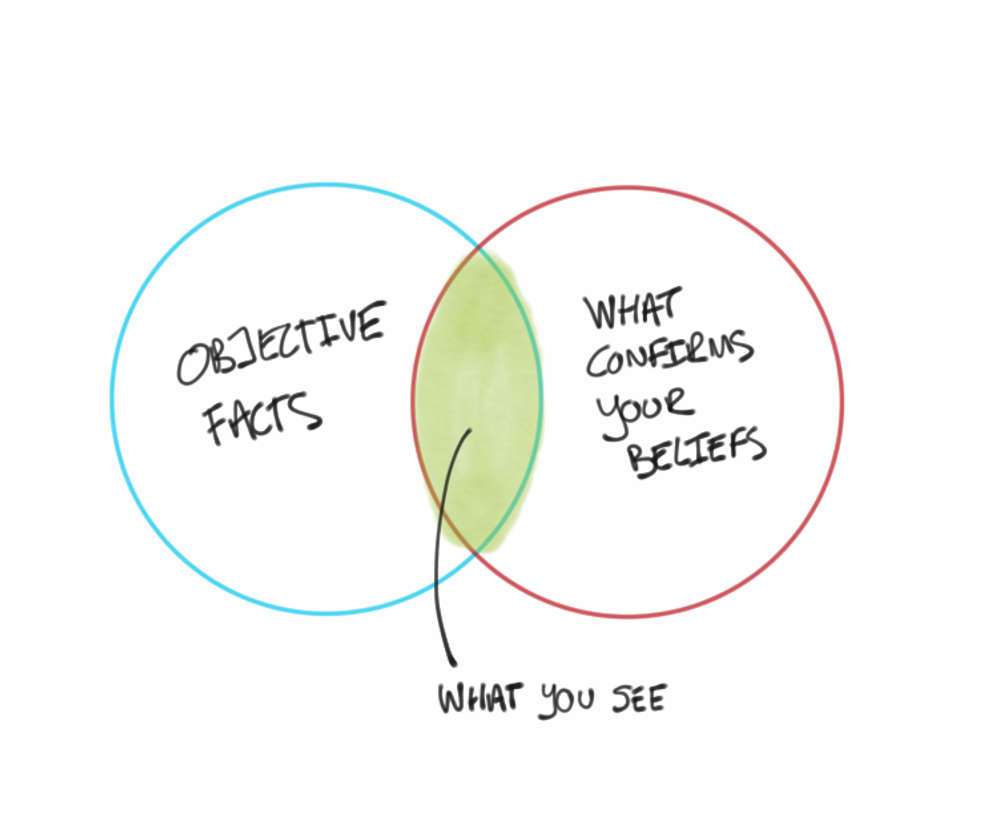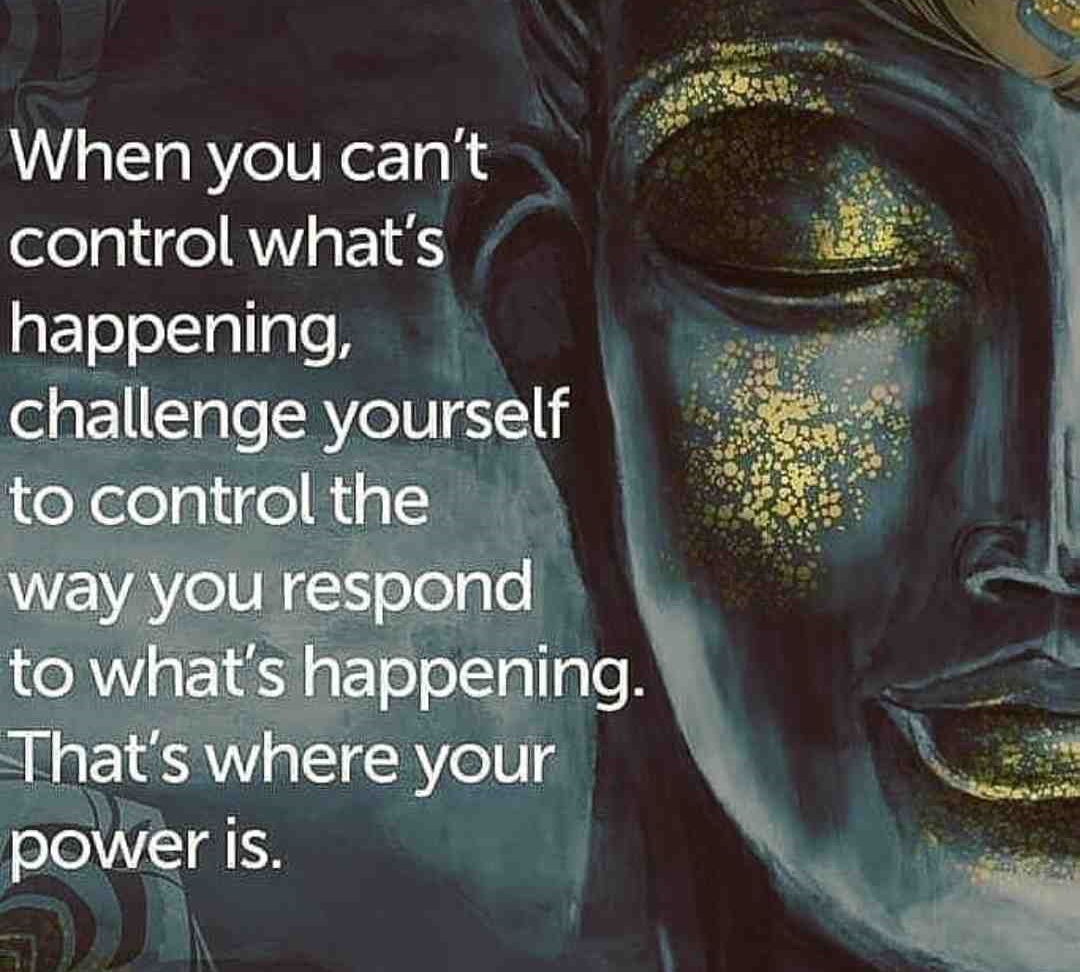Situational Communication
Different Strokes For Different Folks
If you want to go fast, go alone. If you want to go far, go together.

This is the last article in a short series on communication, persuasion and change and we are focusing on situational communication - which is to do with how you adapt your style of communication according to certain key situational factors.
Goal Oriented Communication
People communicate for many different reasons but in this article we are looking specifically at situations where you have a clear objective that you want to influence and persuade the other person:
- To accept and agree with, and
- To take action to support you in the achievement of that objective.
Situational Communication
The Task-Relational Spectrum
Effective communicators change their styles to fit the situation and move appropriately along the spectrum of a task versus a relational orientation.
[1] The task end of the spectrum is directive
It is where you deliver short, focused instructions and tell the other person exactly what you want them to do in as few words as possible.
This can include telling the other person what you want them to do, how you want them to do it, when you want them to do it, where you want them to do it.
A task focused communication is a one-way communication.
It will typically be used in one of two contexts:
- An emergency or a situation of extreme urgency where is an immediate physical, psychological or financial danger.
- Where you are in a role of oversight with the other person and you are mentoring, teaching or instructing them.
[2] The relational end of the spectrum is about affiliation
It is about preserving and deepening a relationship with the other person.
Relationship oriented communication is where the communicator engages in a two-way communication that includes listening, facilitating, and supportive behaviours.
It will typically be used when your intention is to be collaborative, participative and collegiate.
Most of your communications will likely be somewhere in the middle area of this spectrum.
The
key point here is having the flexibility and insight to be able to read
the situation and thus be able to adopt the most appropriate style of
communication on the task-relational spectrum.
This is not about your tone of voice, the type of language you use, the style of your delivery or your body language - important as these are.
Situational communication is about taking account of 3 often ignored factors about the other person:
How to engage with people
As it says in the old African saying in the header to this article:
"If you want to go far, go together."
Bringing people with you is a process not a one-time event.
Here are 3 tips for getting people to care about what you find important:
- Find out what is important to the other person
- Support others in achieving their goals
- Share what you care about.
Situational Communication - Understanding The Legacy

Everyone has a background of prior experiences in many areas of life.
These past experiences will most likely have a significant influence on how someone responds to your attempts to influence and persuade them to accept your suggestions and proposals and to take action to support you in the achievement of your objectives.
As individuals, and organisations, we
all carry scar tissue from past bad experiences and we are energised and
motivated by past good experiences. In the business world we refer to this as "change readiness". If
you understand the other person's past experience, of whatever it is
that you are wanting to persuade them to do, you will tailor your
communication to take account of this.
So make sure you understand the other person's past experiences of this type of holiday before you try to engage their suppport.
Example:
You are pitching the idea to someone you know socially the prospect of their family and yours [plus children and dogs] sharing an Airbnb property that is large enough for 2 families and has enclosed land attached suitable for dogs to run around safely and unsupervised.
Because you are sensitive to the importance of establishing the other person's change readiness, over the course of several conversations you find out that they had a holiday like this 2 years ago with another family and it didn't work out.
Alternatively, you find out that they have done it before and it was a big success.
Clearly you will tailor your approach to address and take acount of these prior experiences.
Situational Communication - Understanding Their Readiness

In addition to understanding someone's past experience and change readiness, it is important to understand their current stage of development and competence. In summary we refer to this as maturity.
Readiness is the preparedness and ability of a person to
take responsibility for directing his or her own behaviour in a specific field of knowledge and activity.
The level of
maturity displayed will depend on the nature of the specific task, function, or
objective for which you are seeking to gain their engagement and support.
The higher the level of maturity the greater will be your emphasis on a relational style of communication.
Conversely, a lower level of maturity will require you to exercise a task oriented style of communiciation.
Example:
Whenever I have been on holiday with my grown up daughter I am very happy to delegate the planning and arrangement to her because I know that she has travelled extensively and taken holidays all over the world.
I was recently trying to encourage a young friend to take a gap year before university and to travel overseas. She liked the idea but was nervous about it, so I adopted a more prescriptive approach and tried to coach her through the process and a range of options she could consider.
If I had reversed my approach to each person the results would have been a disaster!
Situational Communication - How To Give Negative Feedback

In your personal life there will be situations when it is necessary to give some feedback on their behaviour.
This can be hard enough in the workplace where you are responsible for other people and how they perform. But out of the workplace it can be very difficult and can lead to serious friction in relatiomships.
Many years ago I learned simple simple but powerful tips from Ken Blanchard in his seminal book The One Minute Manager
- Give people clear simple goals. Be precise about what you are asking the other person to do, and when you want it done by.
- Give frequent and regular positive feedback. Keep it short and focused. As Blanchard put it: "Catch them doing something right- and praise them".
- If you have to give negative feedback, keep in short and specific. You earn the right to do this
by doing so in a
context of frequent and regular positive feedback.
The absolute key to giving negative feedback
is to do so constructively and without destroying the other person's self esteem. Never lose sight of the fact that you are addressing the behaviour and not the
person.
As the old preachers used to say: "Love the sinner not the sin"!
Example:
When I was a young manager in a large corporation, many years ago, I had a number of staff working for me on business developement.
There was one girl on my team who was quite well intentioned but chaotic and she failed to deliver to me some important documents on time for a business meeting.
Having recently read and been impressed with, the "One Minute Manager" and so decided to put it into practice.
I took her to one side and quickly explained that her behaviour was unacceptable, and I told her why.
She looked extremely upset and became tearful. But as I then proceeded to praise her as a person and a good intentions, her face changed and she broke into a smile.
I will never forget that first experience of practising these tips.
Free Download:
Situational Communication - Summary Notes
Further Reading:
Persuasion
[1] The Art Of Persuasion The One Fundamental Principle - Create A Win-Win
[2] The Art Of Persuasion Advanced Communication Skills - Gaining BuyIn
[3] The Art Of Persuasion Planning For Success - Here's How To Do It!
Change
Getting From A to B Is Not Aways A Straight Line
Group Culture - The Invisible Software That Rules Your Life
Change Questions To Change Your Outcomes
Communication
How To Influence without Authority - 6 Key Tips
Situational Communication - Different Strokes For Different Folks
Return from "Change Questions" to: Communication Persuasion and Change
Or to: Walking The Talk
- What if everything we think…
LATEST ARTICLES
The Power Of Patience - Why You Need The World's Toughest Quality
 Nothing in the world can take the place of patience. Patience and persistence are omnipotent. In everyday life, patience is often overshadowed by the desire for immediate results. We live in an era of…
Nothing in the world can take the place of patience. Patience and persistence are omnipotent. In everyday life, patience is often overshadowed by the desire for immediate results. We live in an era of…Demonizing The Other and Personal Acts Of Compassion
 What Does Demonizing The Other Mean? Demonizing the other refers to the act of portraying a group of people or an individual as inherently evil, threatening, or inferior. It often serves to justify di…
What Does Demonizing The Other Mean? Demonizing the other refers to the act of portraying a group of people or an individual as inherently evil, threatening, or inferior. It often serves to justify di…Why You Should Embrace Anomalies - The Incredible Value Of Disconfirming Evidence
 Is Your Desire To Be Right Greater Than Your Desire To Have Been Right? An anomaly is a deviation from what is expected or commonly regarded as the norm. It often appears as an unexpected observation…
Is Your Desire To Be Right Greater Than Your Desire To Have Been Right? An anomaly is a deviation from what is expected or commonly regarded as the norm. It often appears as an unexpected observation…Amazing Grace - The Majesty And The Mercy of Freedom From Your Pain
 "I once was lost, but now I am found, was blind, but now I see." The hymn and popular song "Amazing Grace" was written 250 years ago by John Newton, a former slave trader who in 1748 nearly died in a…
"I once was lost, but now I am found, was blind, but now I see." The hymn and popular song "Amazing Grace" was written 250 years ago by John Newton, a former slave trader who in 1748 nearly died in a…The Transformative Power Of Acceptance
 Experience The Power Of Acceptance. This website contains about 500,000 words. You could read every single word and it wouldn't make any real difference to you. You might become better informed, but t…
Experience The Power Of Acceptance. This website contains about 500,000 words. You could read every single word and it wouldn't make any real difference to you. You might become better informed, but t…Inversion - The Power Of Opposite Thinking
 How To Avoid The Unwanted Outcome. The power of opposite thinking, also known as inversion, lies in its ability to stimulate creativity, enhance problem-solving, and provide a fresh perspective on cha…
How To Avoid The Unwanted Outcome. The power of opposite thinking, also known as inversion, lies in its ability to stimulate creativity, enhance problem-solving, and provide a fresh perspective on cha…Are You Aligned With Reality? Or Do You See What You Believe?
 We tend to see that which aligns with what we believe, and to act upon that rather than acting on reality. Being aligned with reality starts with a clear and accurate understanding of the world. It me…
We tend to see that which aligns with what we believe, and to act upon that rather than acting on reality. Being aligned with reality starts with a clear and accurate understanding of the world. It me…The Law Of Response and Outcome
 A New Approach To A New Life At time of writing we are entering a new year which is traditionally a time of making resolutions to change our behaviour and improve the quality of our lives. And yet pow…
A New Approach To A New Life At time of writing we are entering a new year which is traditionally a time of making resolutions to change our behaviour and improve the quality of our lives. And yet pow…Clear Thinking - Turning Ordinary Moments Into Extraordinary Results
 There are two ways to handle the world - try to predict, or try to prepare. "Clear Thinking" by Shane Parrish, published in Oct 2023, is a laudable testament to the art of cogent thinking, and will be…
There are two ways to handle the world - try to predict, or try to prepare. "Clear Thinking" by Shane Parrish, published in Oct 2023, is a laudable testament to the art of cogent thinking, and will be…Self Dialogue - Working With Your Many Selves
 Self Dialogue Is About Working With ALL Levels Of Your Mind. The key to effective self dialogue is to have tools, techniques and resources that work with all levels of your mind. This simple self-faci…
Self Dialogue Is About Working With ALL Levels Of Your Mind. The key to effective self dialogue is to have tools, techniques and resources that work with all levels of your mind. This simple self-faci…The Balanced Brain - The Ultimate Route To Personal Transformation
 How To Experience The Benefits Of A Balanced Brain. Underpinning all of the belief systems and practices that offer routes to personal change, transformation and spiritual growth is the balanced brain…
How To Experience The Benefits Of A Balanced Brain. Underpinning all of the belief systems and practices that offer routes to personal change, transformation and spiritual growth is the balanced brain…How To Make Better Decisions - By Avoiding The Narrative Trap
 To Understand The Truth We Have To See The Whole Picture. One of the best ways to make better decisions is to have a deeper understanding of the many things that might stop that happening. To understa…
To Understand The Truth We Have To See The Whole Picture. One of the best ways to make better decisions is to have a deeper understanding of the many things that might stop that happening. To understa…The Greatest Love - The Most Important Relationship You Will Ever Have
 Yet Most Will Never Know It Everyone of us has a place, in our hearts there's a space, that is home to the greatest love of all. This love transcends everything we think we know about the world of for…
Yet Most Will Never Know It Everyone of us has a place, in our hearts there's a space, that is home to the greatest love of all. This love transcends everything we think we know about the world of for…Everything Is Connected And Why You Don't Feel It
 ...And Why It Matters
As human beings we are skating on very thin ice with our sense of self and certainty about "how things are" and what we like to think of as reality:
...And Why It Matters
As human beings we are skating on very thin ice with our sense of self and certainty about "how things are" and what we like to think of as reality:
Who Is In Charge Of Your Brain?
 How Not To Be Stupid. Who is in charge of your brain? This is not a silly questions. It matters because the outcomes that you experience in your life are determined by how you respond to the events th…
How Not To Be Stupid. Who is in charge of your brain? This is not a silly questions. It matters because the outcomes that you experience in your life are determined by how you respond to the events th…How To Be A Winner On A Very Large Scale
 The Incredible Benefits Of Selective Attention. This is not a typical article about how to be a winner. We are not going to talk about goal setting, the importance of habits, the power of focus and al…
The Incredible Benefits Of Selective Attention. This is not a typical article about how to be a winner. We are not going to talk about goal setting, the importance of habits, the power of focus and al…The Metagame Approach To Life
 How To Achieve Your Biggest Objectives.
The metagame approach to life is all about winning and achieving your biggest objectives by:
- Understanding the bigger picture
How To Achieve Your Biggest Objectives.
The metagame approach to life is all about winning and achieving your biggest objectives by:
- Understanding the bigger picture
- Being better by doing things d…Shantideva - The Way Of The Bodhisattva
 Walking The Path Of Compassion. Shantideva the 8th century Indian Buddhist sage is famous for his treatise "The Way of the Bodhisattva" delivered as an extended teaching to the monks of Nalanda monast…
Walking The Path Of Compassion. Shantideva the 8th century Indian Buddhist sage is famous for his treatise "The Way of the Bodhisattva" delivered as an extended teaching to the monks of Nalanda monast…Reframing History - Deconstruction And Discussion Not Destruction
 History is always about context, not imposing our own moral values on the past. For those of us fortunate enough to live within western democracies, we are living in an age where a vociferous and into…
History is always about context, not imposing our own moral values on the past. For those of us fortunate enough to live within western democracies, we are living in an age where a vociferous and into…Tao Te Ching - Connecting To Your True Source Of Power.
 How To Be Lived By The Tao. The Tao Te Ching is one of those books that many people read, few understand, and even fewer put into practice. The only way to know the Tao is to experience it, and it is…
How To Be Lived By The Tao. The Tao Te Ching is one of those books that many people read, few understand, and even fewer put into practice. The only way to know the Tao is to experience it, and it is…How Things Really Are - The Inbuilt Design Flaws
 Chaos, Disorder And Decay Is The Natural Order Of Things. Nobody has the perfect life. We all struggle and strive to attain health, wealth and personal happiness. Yet these three big areas: our health…
Chaos, Disorder And Decay Is The Natural Order Of Things. Nobody has the perfect life. We all struggle and strive to attain health, wealth and personal happiness. Yet these three big areas: our health…Intuition Or Anxiety - Are There Angels Or Devils Crawling Here?
 How To Tell The Difference Between Intuition and Anxiety. How do you know whether the voice of your intuition is real or just the product of your inner anxiety? Several months ago I was having a drink…
How To Tell The Difference Between Intuition and Anxiety. How do you know whether the voice of your intuition is real or just the product of your inner anxiety? Several months ago I was having a drink…What Is Truth - How To Tell A Partial Truth From The Whole Truth?
 How the truth and nothing but the truth is often not the whole truth. My great aunty Flo broke her arm and died. It is true that she broke her arm in 1923. It is also true that she died in 1949. But t…
How the truth and nothing but the truth is often not the whole truth. My great aunty Flo broke her arm and died. It is true that she broke her arm in 1923. It is also true that she died in 1949. But t…Duality And Life Beyond Your Thinking Mind
 Duality and life beyond your thinking mind focuses on the limitations of time, foreground and background, duality and "stuckness". The first aspect of duality and life beyond your thinking mind focuse…
Duality and life beyond your thinking mind focuses on the limitations of time, foreground and background, duality and "stuckness". The first aspect of duality and life beyond your thinking mind focuse…The Conscious Mind Is Limited - Be Aware And Be Prepared
 Being aware is the first stage of being prepared. The conscious mind is limited in so many ways. There are some who would argue that there is no such thing as conscious thought and that it is represen…
Being aware is the first stage of being prepared. The conscious mind is limited in so many ways. There are some who would argue that there is no such thing as conscious thought and that it is represen…Your Inner Map Of Reality - Here's Why You Think The Way You Do
 The big picture of how your inner map of reality creates your feelings, thoughts, and behaviours. Your inner map of reality is based on the filters of your own ethnic, national, social, family and rel…
The big picture of how your inner map of reality creates your feelings, thoughts, and behaviours. Your inner map of reality is based on the filters of your own ethnic, national, social, family and rel…The Failure Of Cancel Culture - Suppression Not Engagement
 Why we need to wear our beliefs lightly and develop negative capability. Throughout history people have campaigned to fight beliefs, ideologies, and injustices that they perceived to be oppressive, di…
Why we need to wear our beliefs lightly and develop negative capability. Throughout history people have campaigned to fight beliefs, ideologies, and injustices that they perceived to be oppressive, di…4 Big Reasons Why We Get Stuck In Our Attempts At Personal Change
 Most People Spend Their Entire Life Imprisoned Within The Confines Of Their Own Thoughts. This first of the 4 big reasons why we get stuck is, in my view, the most important. The "self-help industry…
Most People Spend Their Entire Life Imprisoned Within The Confines Of Their Own Thoughts. This first of the 4 big reasons why we get stuck is, in my view, the most important. The "self-help industry…How Do I Change And Why Is It So Hard?
 We Would Rather Die Than Change, And We Usually Do In my experience, the vast majority of people who say they want to change don’t change. Most people reading this won’t change because they don’t real…
We Would Rather Die Than Change, And We Usually Do In my experience, the vast majority of people who say they want to change don’t change. Most people reading this won’t change because they don’t real…The Illusion Of A Separate Self - Windows 11 With Self Awareness!
 Beyond the content of your mind you are so much more than you think you are. When we talk of "myself" this is the conventional way of referring to our self image which is in fact the ego's constructio…
Beyond the content of your mind you are so much more than you think you are. When we talk of "myself" this is the conventional way of referring to our self image which is in fact the ego's constructio…